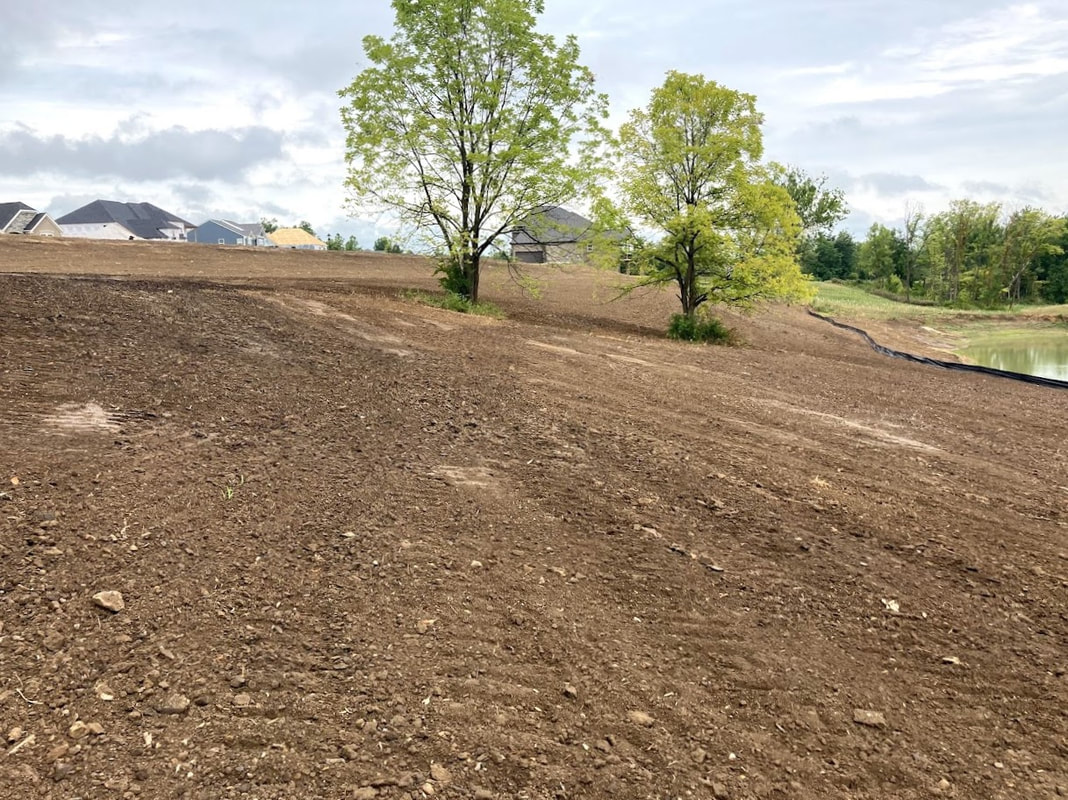|
I’m just clearing. Do I need a permit? The answer is likely yes! In Warren County, an Earth Disturbing Permit (EDP) is required for any project expected to disturb a total area of an acre or more of land. Removing trees with the entire root ball results in land disturbance and exposed soil. Clearing involves the cutting and removal of trees, brush, and other above ground material while grubbing is the removal of roots, stumps, and other material below the existing grade. Regarding an EDP, it does not matter whether the vegetation was naturally occurring or intentionally planted. If you think of this in terms of one tree, it might not seem like a huge concern, but when you think of this type of tree clearing on a large scale (i.e. an acre or more of tree clearing), it can lead to quite a bit of disturbed soil and potential for sediment-laden discharges from the site during rainfall events. Are there any other restrictions for clearing? Yes, depending on when and where you are developing. Tree clearing must not occur between April 1st and September 30th without first coordinating with the Ohio Department of Natural Resources- Division of Wildlife (ODNR-DOW) and the U.S. Fish and Wildlife Service- Ohio Field Office (USFWS-OHFO). Native bat species roost and raise their young in trees all throughout Ohio during this time each year. Unfortunately, all bats in the state are experiencing population decline and have become protected by law in some way. The U.S. Endangered Species Act of 1973 is periodically updated to protect endangered and threatened flora and fauna across the country. Federally endangered species in Ohio include the Indiana Bat (Myotis sodalist) and Northern Long-Eared Bat (Myotis septentrionalis). If your project calls for tree-clearing activities during this five-month window, the ODNR and USFWS will recommend surveys be conducted to determine if the proposed area will negatively impact the bats. If there are no hibernaculum or bats identified during the survey, it may be safe to proceed with tree clearing. Photo credit: Ann Froschauer, USFWS For earth disturbing activities immediately adjacent to surface waters of the state, the Ohio Environmental Protection Agency (OEPA) requires that, if feasible, a 50-foot buffer on either side of the ordinary high-water mark must remain undisturbed. Trees and brush along a water bodies’ edge provides significant stream bank stabilization. If a natural buffer cannot be maintained, land must be temporarily stabilized within two days of the most recent disturbance (if the area will remain idle for more than 14 days) and permanently stabilized within two days of reaching final grade.
Whenever possible, we strongly recommend preserving trees during land development as they prevent erosion, reduce runoff rates, and increase property value. For guidance on tree and natural area preservation, refer to Chapter 7.3 of the Ohio Rainwater and Land Development Manual. Additional Resources USEPA Preserving Natural or Existing Vegetation Fact Sheet Ohio Rainwater and Land Development Manual Ohio EPA NPDES General Construction Permit (OHC000006)
0 Comments
Leave a Reply. |
Details
Urban team BLOGEvery month, the Warren Co SWCD Urban Team dives deep into the world of land development as it relates to stormwater pollution prevention. The blog covers topics like erosion & sediment control best management practices (BMPs), state and local regulations, retention/detention basins, and the conservation of our natural resources. Stay up to date with Development Digest by signing up for WCSWCD Urban eNews!
Categories
All
Archives
July 2024
|
|
|
Contact:PHONE: (513) 695 - 1337
EMAIL: [email protected] HOURS: Monday - Friday 7:30am - 4:00pm (except holidays) Connect:Warren County Soil & Water Conservation District Copyright © 2016
Warren SWCD Privacy Notice. Emails are serviced by Constant Contact. Constant Contact's Privacy Notice. |


 RSS Feed
RSS Feed
